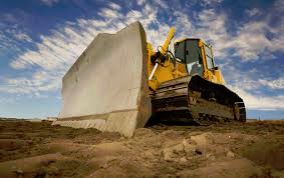/
Earthwork Components
Earthwork Components
Learn about the Earthworks Systems' sub-components and their uses.
The Earthworks Systems' sub-components can be broken down into three general categories of use:
- Earthwork Systems provides objects that can receive and contain soil. These objects are collectively referred to as "soil zones".
- The Earthwork Zone defines an area on a terrain where soil material can be piled. In addition, when it is designated as a diggable area, an earthmoving tool (like a bucket or blade) can be used to deform the soil material it contains.
- The Soil Bin defines a container (truck bed, ship hold, storage bin, etc.) into which soil material can be poured. When soil material is present in the bin, it can also be dug into and removed.
- The Deformable Terrain, like the Earthwork Zone, defines an area on a terrain or graphics nodes where soil material can be piled and dug. Unlike the Earthwork Zone, it is optimized for larger sizes and uses dynamically varying levels of detail to achieve better performance.
- Earthwork Tools provides displacement tools that can be used to extract soil from one area and move it to another. These tools are defined in mechanisms.
- The Bucket tool represents the bucket appendage on an excavator-type vehicle. It can dig into a soil zone, carry it to another soil zone, and then pour it out.
- The Generic Bucket tool is similar to the Bucket, but provides more possibilities for customization. Its shape can be adapted to fit with various earthmoving tools such as the wide bucket appendage on wheel loaders and other types of earthmovers.
- The Blade tool represents the blade on the front of a bulldozer-type vehicle. It cannot pick up soil, but can displace it (push it) to an adjacent portion of a soil zone.
- Earthwork Systems provides utilities to further manipulate or monitor soil within a simulation. They can be part of a scene or mechanism.
- The Soil Layer is a versatile utility that can add soil within the bounds of an existing soil zone. It is used to pre-fill soil bins, create soil piles and layers, and can also be used to bury items underground.
- The Soil Emitter, as its name implies, emits soil particles at a user-defined rate. It can be used to emulate structures which emit granular materials, such as hoppers.
- The Soil Culling Geometry can cull (erase) soil particles on contact. It is mostly used to simulate a drop zone, for example a hopper.
- The Soil Mass Sensor measures soil mass within certain boundaries. It can be used to measure soil being spilled or the amount of soil that remains inside some designated region, such as a trench in an Earthwork Zone.
- The Soil Culling Monitor must be used in conjunction with the Soil Culling Geometry utility: it reports the mass being culled by the latter. String-based identification can be used to pair culling monitors with culling geometries. This utility is mostly used to measure spilled soil particles.
